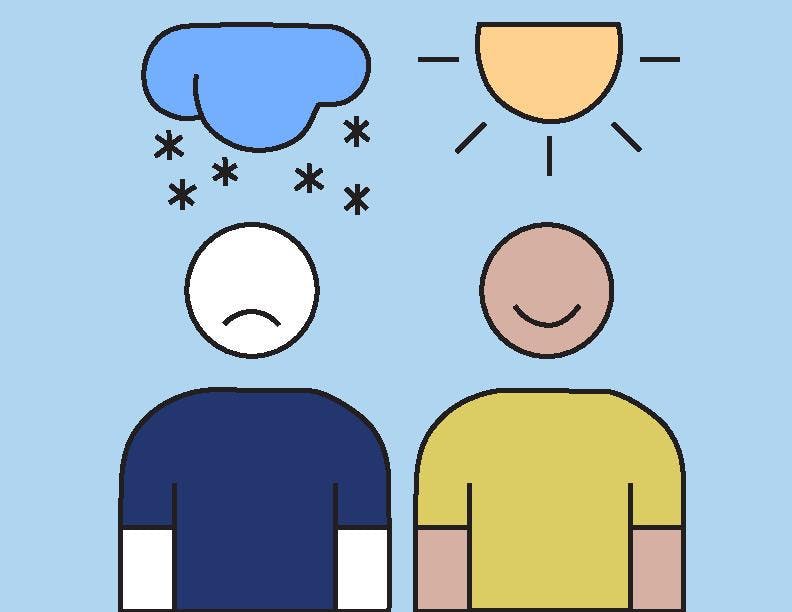Although she had already been dealing with depression for five years, when psychology senior Lucy VanDyke's symptoms started getting progressively worse during the winter months, that's when her therapist diagnosed her with seasonal affective disorder as well.
VanDyke explained that starting at the end of October and then usually to the end of February is when she feels the most depressed.
“I usually just feel very sad, kind of disconnected from the world and I just want to lay in bed all day,” VanDyke said.
Seasonal affective disorder, or SAD, is commonly known as seasonal depression and is a type of major depression in a seasonal pattern.
Psychology professor Lily Yan said in order to be diagnosed with seasonal depression you have to have a major depression episode two years in a row, same time of the year, usually every winter. A big sign of seasonal depression is if you start to feel the symptoms at the beginning of winter but by spring the symptoms go away.
While most people might have the symptoms and think they have seasonal affective disorder, most of the time, the symptoms aren’t severe enough to be considered, Yan said.
“For most people, they don't actually have those severe symptoms to make it a depression, it's more like a mild form,” Yan said. “So that's called 'winter blues' and winter blues is affecting more people.”
Yan, whose focus is on behavioral neuroscience and the effect of light on people, said that while there might be multiple causes for seasonal depression, the biggest cause is just the lack of light in the wintertime.
Yan said that in the summer, there is a lot more brightness and people spend more time outside getting exposed to the sunlight, which ultimately makes them feel better. However in the winter, the days are shorter, the sun isn’t as bright and people tend to stay inside more, which in turn limits their time with direct sunlight.
With the lack of sunlight exposure being the main cause of seasonal affective disorder, Yan said there is a pretty obvious way to fix it.
“So since the cause is less light exposure, what you can do is get more light and that the best light source is sunlight,” Yan said. “That's why the most effective thing would be to take a walk outside, spend some time outdoors.”
Like Yan, Counseling and Psychiatric Services, or CAPS, counselor Mike Alnarshi believes that light exposure and light therapy is the best remedy for seasonal depression and recommends a product to help with this.
Happy Light, which can be found at CAPS or used at home, is a light that can mimic sunlight and provide some of the benefits that students would normally get from the sun.
While the majority of students initially come to CAPS for help during the fall semester; usually for first semester anxieties, when it starts getting really cold — with shorter days and minimal sunlight — students start coming in for seasonal depression, Alnarshi said.
He said that for many students, seasonal affective disorder is just another added stressor. Some students may already be feeling a low mood, energy, motivation and maybe some social withdrawal, but seasonal depression worsens it.
“That's the tricky thing with our students,” Alnarshi said. “A lot of them already have so many stressors and issues, just at their baseline and then the short days, cold weather, just kind of amplifies some of that stuff.”
While Yan and Alnarshi both agree that light therapy is the best way to help with seasonal depression, there are other things they mention that students can also do. Exercise, having a consistent sleep schedule, a healthy diet and keeping a structured routine, are among the many things students can do.
Although, the most important thing to do out of all of these is to get professional help with regular therapy, whether with CAPS or another therapist.
For VanDyke, while she does do a lot of these things, her main method is to focus on things that make her happy, like the Christmas season, and remind her of the warmer seasons, like getting a spray tan. Most importantly, VanDyke’s advice for other people with seasonal affective disorder is to just recognize their feelings.
“Don’t hold them in and it’s okay to be sad about the changing seasons and it’s your body's normal response,” VanDyke said.
Support student media!
Please consider donating to The State News and help fund the future of journalism.
Discussion
Share and discuss “Recognizing and managing seasonal affective disorder” on social media.







